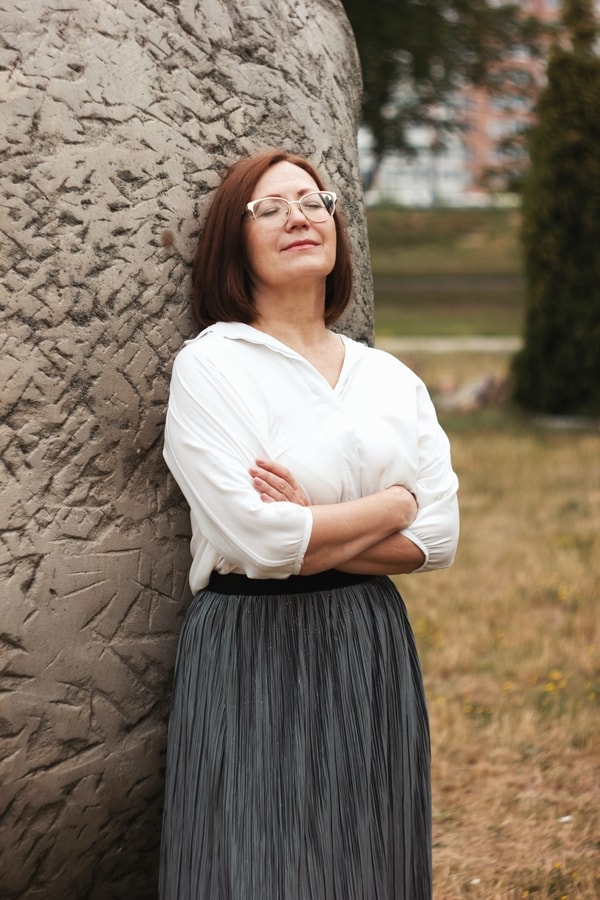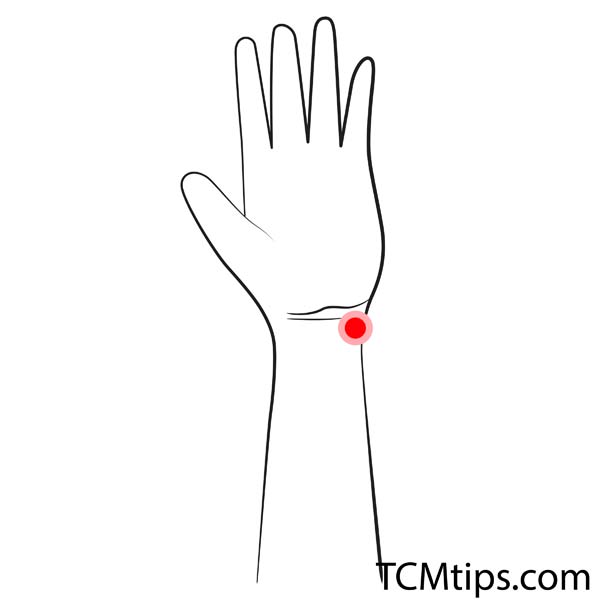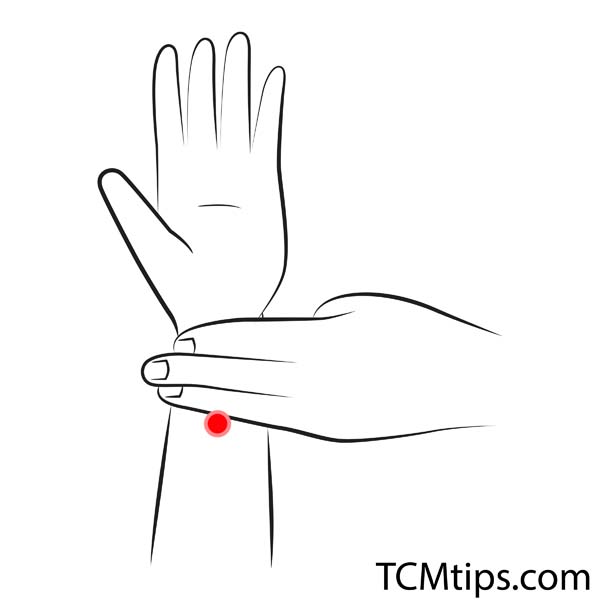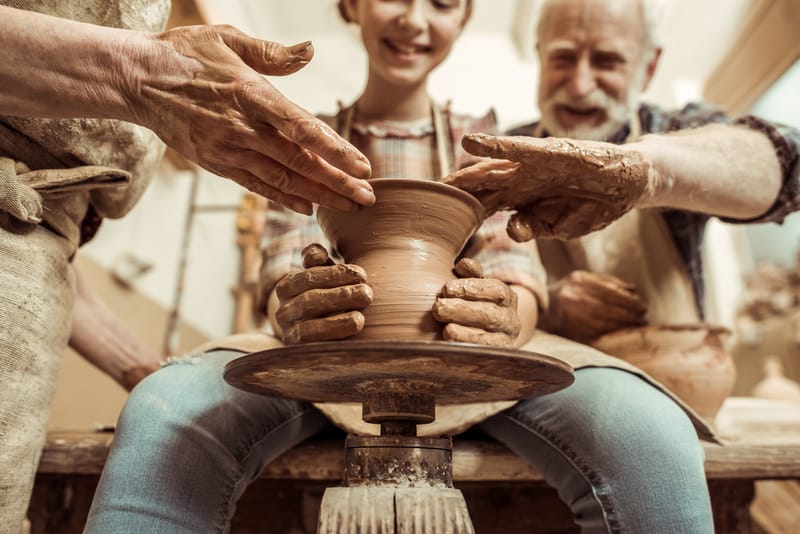Beat Hot Flashes Naturally: Acupressure Points For Immediate Relief
Hot flashes are one of the symptoms to expect as a woman getting into the menopause stage. It is a feeling of sudden heat and sweating on the upper part of your body. As hot flashes can occur frequently during the day, knowing and massaging the acupressure points for hot flashes will be helpful to you.
Normally, your doctor will recommend replacement therapy (HRT) for a short time if your hot flashes are bothersome, or some other western medicine. The issue with HRT, however, is that when you stop taking it, your hot flashes come back.
Traditional Chinese Medicine, on the other hand, because it addresses the root cause of issues, gives a longer-lasting treatment. Having said this, I’ll proceed to show you the best acupressure points for hot flashes that you can massage at home without having to see a doctor and get instant relief.
The Two Most Effective Acupressure Points For Hot Flashes

When you begin to notice the symptoms of hot flashes which includes sudden warmness of the skin; redness on your face, neck, or chest; sweating on your upper body; faster than normal heartbeat, and tingling sensations in your body, here are the acupressure points for hot flashes to massage for relief.
Acupoint: HT-7 (Other Names: Heart-7/Shen Men/Spirit Gate)

One of the two acupressure points for hot flashes that you should massage daily when you notice symptoms of menopause is acupoint HT-7. This acupressure point is called Shenmen in Chinese and Spirit Gate in English. It is one of the heart meridian acupoints and is effective in nourishing the blood and cooling down internal fire.
You’ll find acupressure point HT-7 at the crease of the wrist, in a depression on the radial part of the flexor carpi ulnaris tendon. It is the point between the pisiform bones and the ulna that you can feel with your thumb.
Aside from being one of the acupressure points for hot flashes, the spirit gate pressure point is used clinically to treat insomnia, stress, and agitation. It can as well help you fight nicotine withdrawal symptoms.
To activate this acupuncture point for hot flashes, press your right thumb on this acupuncture point on your left hand for up to ten seconds. Rest a bit, for say five seconds, then continue again. You do this on both your right and left hands for five minutes each three times daily – morning, noon, and evening.
Acupoint: PC-6 (Other Names: Pericardium-6/Nei Guan/Inner Pass)

Like HT-7 (Spirit Gate), acupressure point PC-6, Nei Huan, or Inner Gate, as it is called in English, is located in the arm. You can find PC-6 two inches down the horizontal line that demarcated the palm from the wrist. To locate it, you can place three of your fingers below the wrist, where the palm stops. The point where the third finger rests – between the two tendons – is acupoint PC-6.
As an acupressure point for hot flashes, PC-6 opens up the chest, regulates the heart Qi, steadies the Shen, and keeps the stomach in harmony. This is why clinically, PC-6 is effective in treating nausea in pregnant women. It is also one of the acupressure points for thyroid.
To activate this acupuncture point for hot flashes, turn your hands around so that your palms face up, locate the acupoint, and apply pressure on the point with your thumb. Massage this point for five seconds, rest a bit, and continue for up to five minutes three times daily and you’ll get the desired relief you want.
Can Acupuncture Cure Hot Flashes?

Yes, acupuncture is one of the natural ways of treating hot flashes and night sweat in women. Research on 209 women between the ages of 45 and 60 showed that acupuncture can give short-term relief to some menopausal symptoms, hot flashes inclusive.
The menopausal women selected for the study had at least four hot flashes or night sweats a day the two weeks before the experiment. They were placed in two groups – one that received acupuncture treatment for the first six months and another subsequent six months and the other that received acupuncture treatment only for the second six months.
After receiving twenty acupuncture treatments for six months, the first group showed a 36.7 percent reduction in hot flashes per day and after the second six months of treatment, they showed a 29.4 percent reduction in hot flashes per day.
The second group first had an increase of 6 percent in hot flashes per day in the six months they weren’t placed on acupuncture treatment and a 31 percent reduction after the following six months of acupuncture treatment. This is why you should know the acupuncture points for hot flashes to help you control the frequency of your hot flashes as you approach menopause.
What Drinks Help With Hot Flashes?
In addition to massaging the acupressure points for hot flashes, diet is also something to watch when you’re getting into menopause age. What you eat or drink can either reduce or inflate your menopause symptoms and cause you great discomfort.
Research has shown that certain teas can help with hot flashes. Black cohosh root tea is one of such teas. It helps reduce hot flashes and vaginal dryness in women in their menopause. Ginseng tea, Chasteberry Tree tea, and Red Raspberry Leaf tea are also effective in relieving hot flashes and other premenstrual and perimenopause symptoms.
What Foods Stop Hot Flashes?
When approaching menopause, you also need to take food that nourishes the Yin. When you nourish your Yin, you are less susceptible to hot flashes and night sweat. Foods to include in your diet include black sesame, almonds, cherries, bananas, pears, almond oils or flax, honey, cooked drag green vegetables (spinach preferably), black beans, mung beans, and string beans.
Cooked mushrooms, fishes like sardines and salmons that are high in B12, sweet potatoes, zucchini, and small quantities of yogurt or tofu are also essential to your diet.

Try our Anti-Aging Gua Sha Tool designed to bring out your skin’s natural glow.
Best Gua Sha Product- Anti-Aging: The tool is designed to target 11 specific aging signs such as wrinkles and sagging skin. By following the 7-step routine, users can improve skin firmness and reduce fine lines naturally.
- Enhances Skincare Routine: It works effectively with serums and lotions, boosting absorption and efficacy of skincare products.
- Visible Skin Improvement: Users can expect a smoother complexion, reduced puffiness, and a more youthful appearance.
 P. Sze
P. Sze 

















